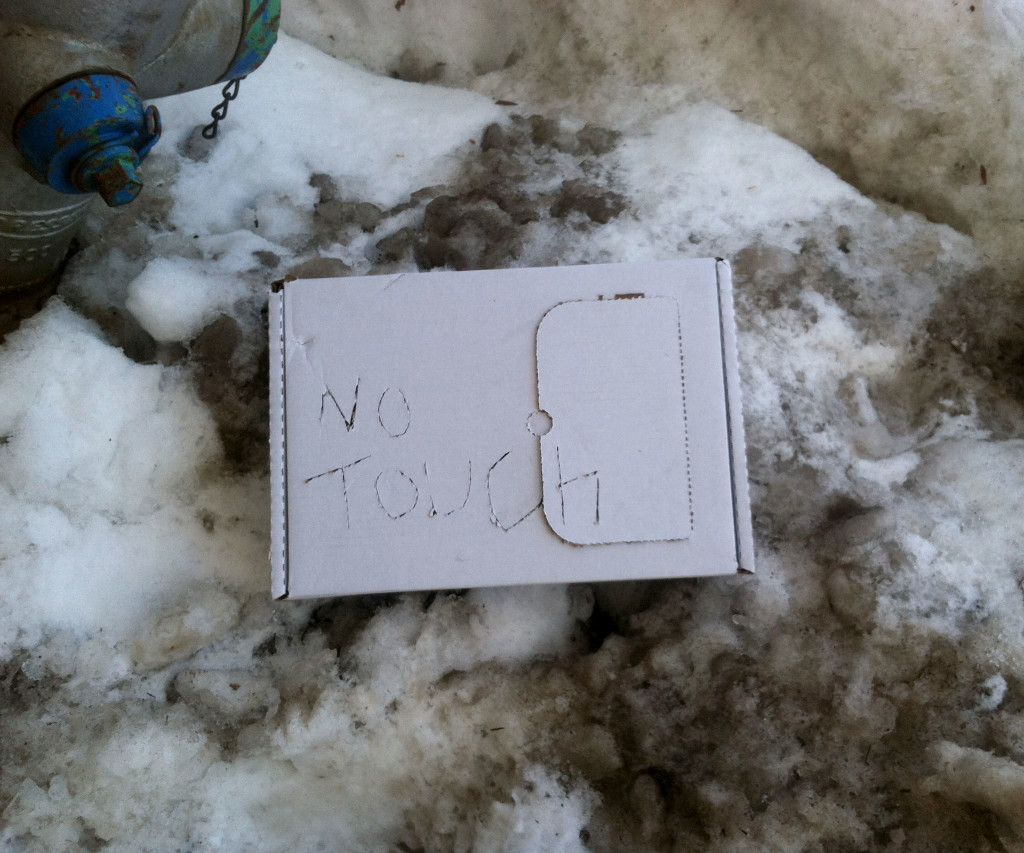
Definition
Spot savers are items used to demarcate an individual’s parking spot and mark that parking spot as his or her own for a temporary period of time. Typically a spot is saved after a period of intense snowfall or snowstorm; the car owner will dig out his or her car from the snow, move the car from the parking spot and place an object in that cleaned spot to reserve it for later use. The most commonplace spot savers are chairs and trash cans, but they can be any physical object imaginable.
History
Spot savers have a long and storied history in the city of Boston and its suburbs. Since at least the 1970’s, there are reports of individuals spot saving their parking spots in South Boston. Due to the increased amount of cars in the city, parking has become more scarce leading to increased spot saving. The official city rules set in place by Mayor Thomas Menino in 2004 state that a resident is allowed to save a spot for 48-hours after a snowstorm occurs (not before). After 48-hours have elapsed, a state employed truck will come around and physically remove spot savers if they are still in place. Although this is official city law, it is supposedly rarely enforced.
Spot saving is a more recent phenomenon in Cambridge (a lifelong Cambridge resident estimated ~4 years, suspecting the cause to be the bad influences of our Southie neighbors). Spot saving is not a practice unique to Boston and Cambridge alone. It occurs in highly populated urban areas surrounded by dense residential housing throughout the US. Such behavior has been observed in a host of cities that experience significant snowfall during the winter including Chicago, Philadelphia and so on.
All photographs were taken in Area 4 in Cambridge, Massachusetts during the brutal winter of 2015. No spot savers were moved or altered during the making of this project.
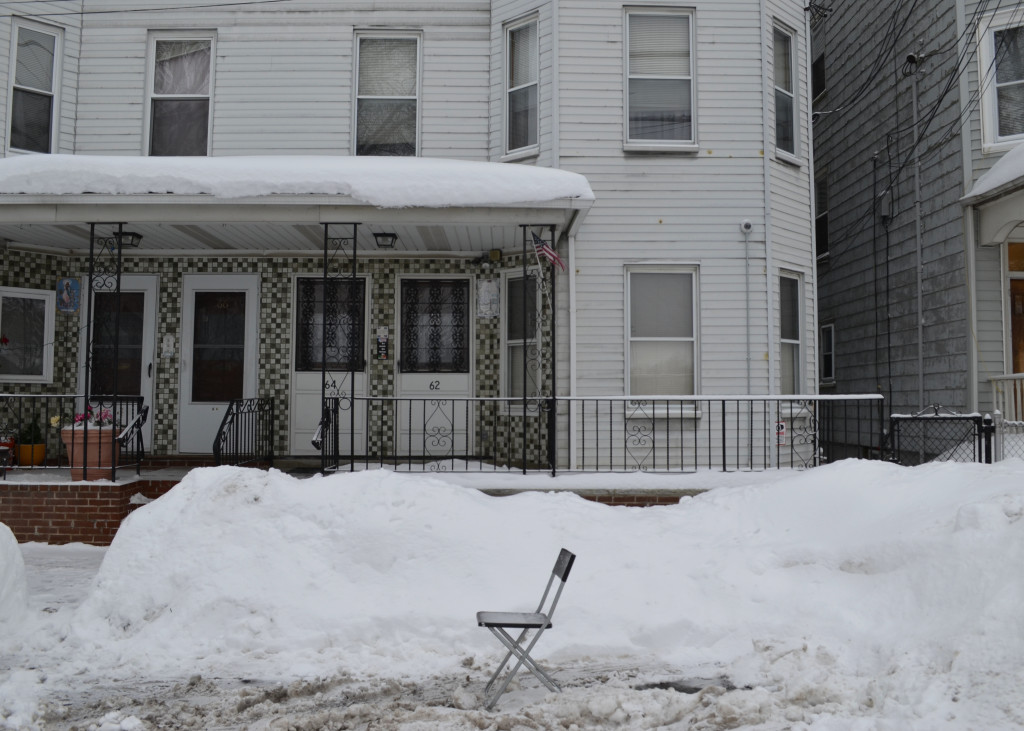
plastic and metal chair

plastic garbage can
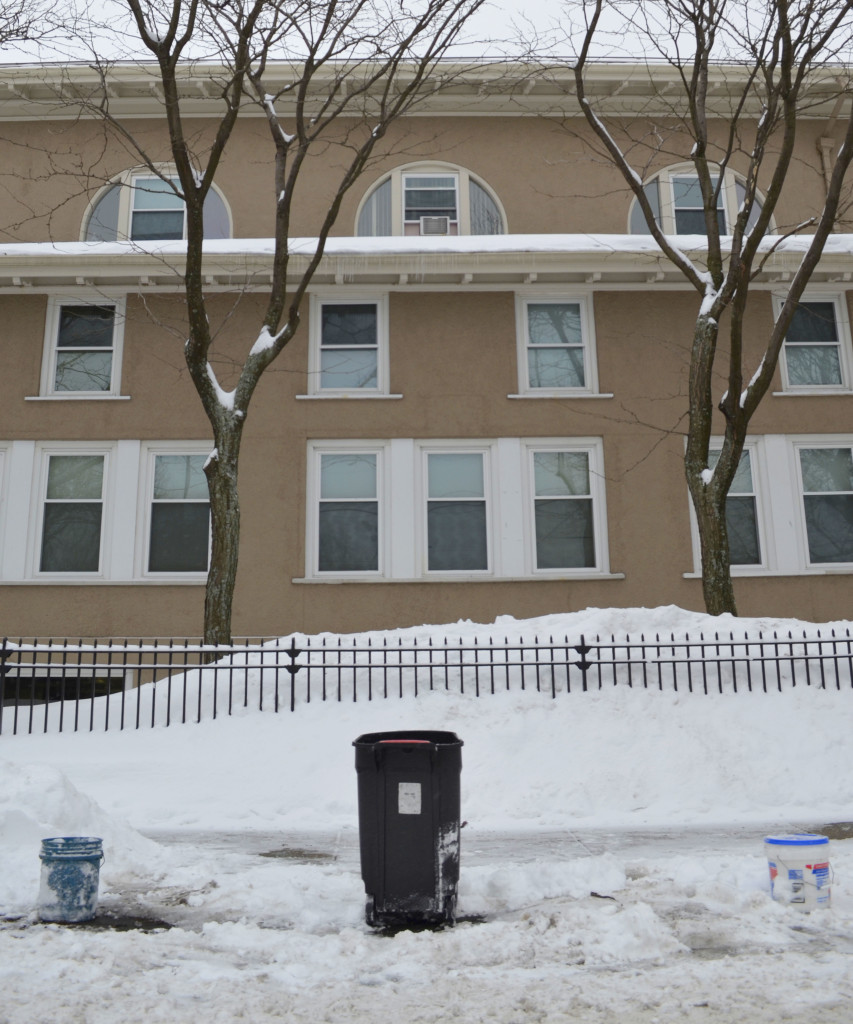
2 x paint buckets & 1 plastic garbage can w/ fixed lid
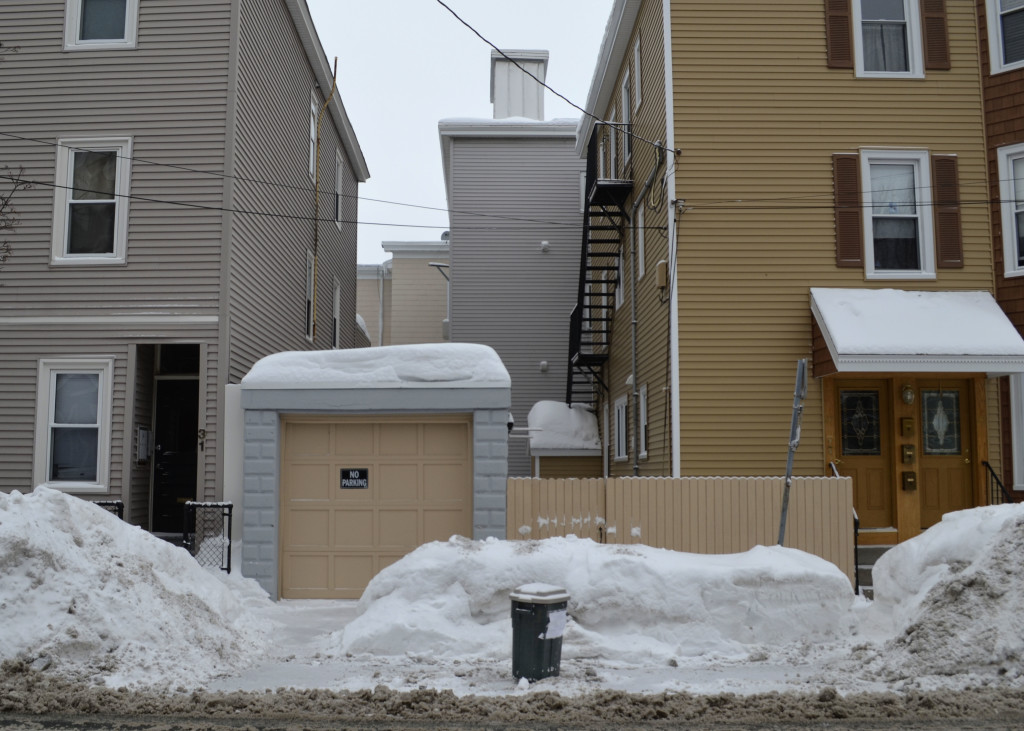
plastic garbage can w/ lid
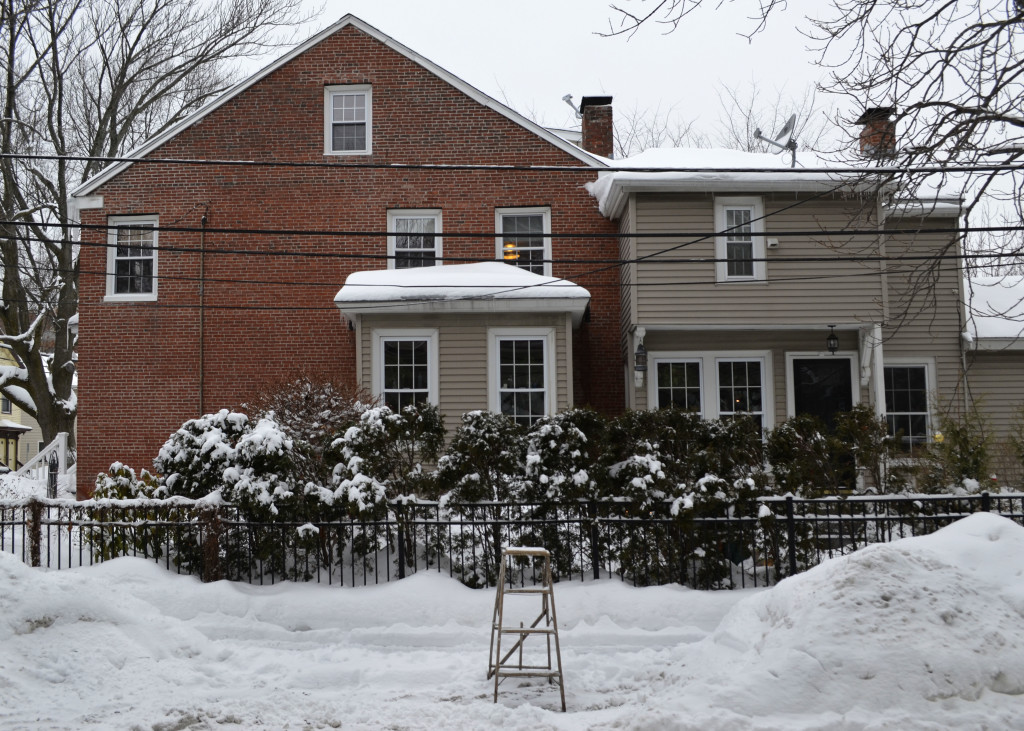
wooden step ladder
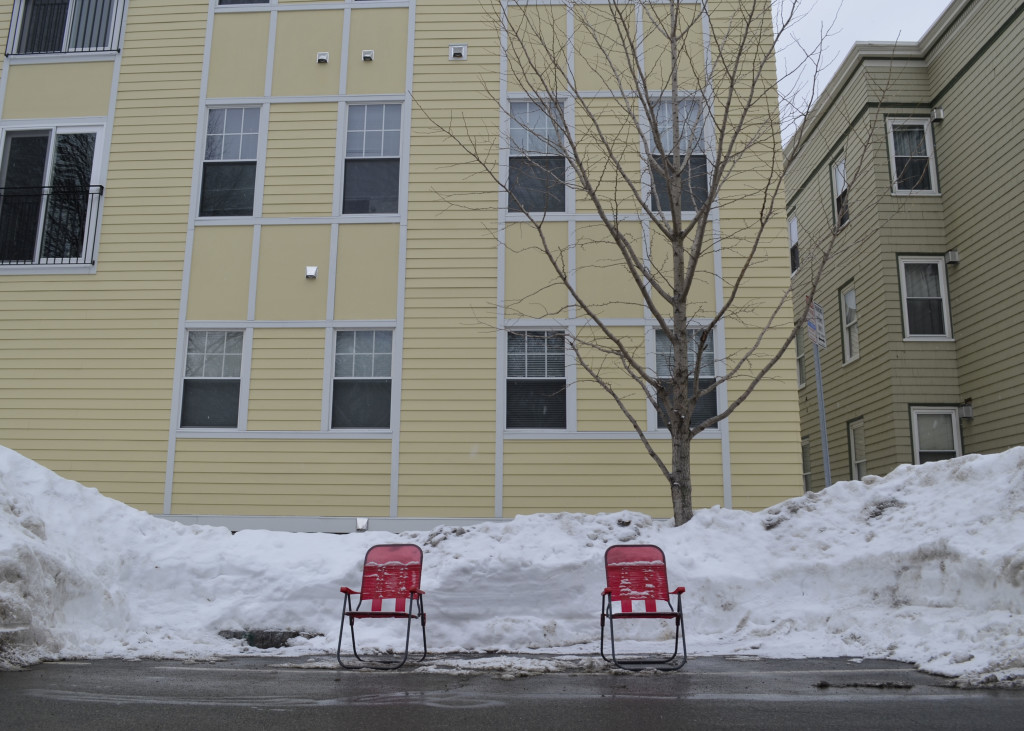
2 x plastic beach chairs
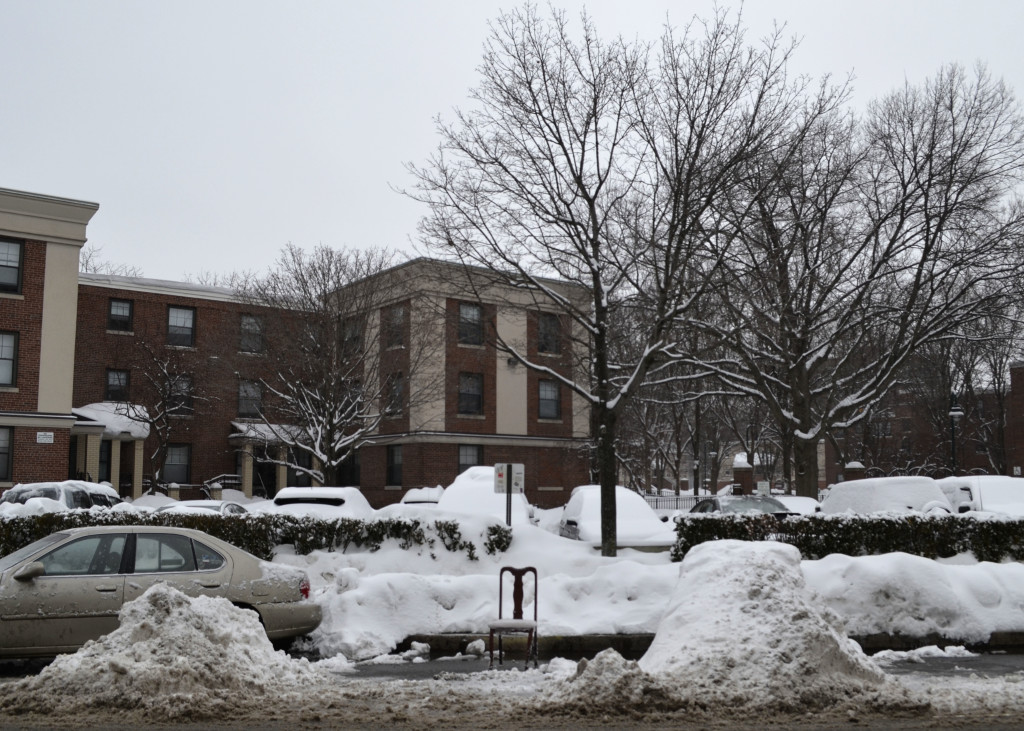
wooden dining room chair
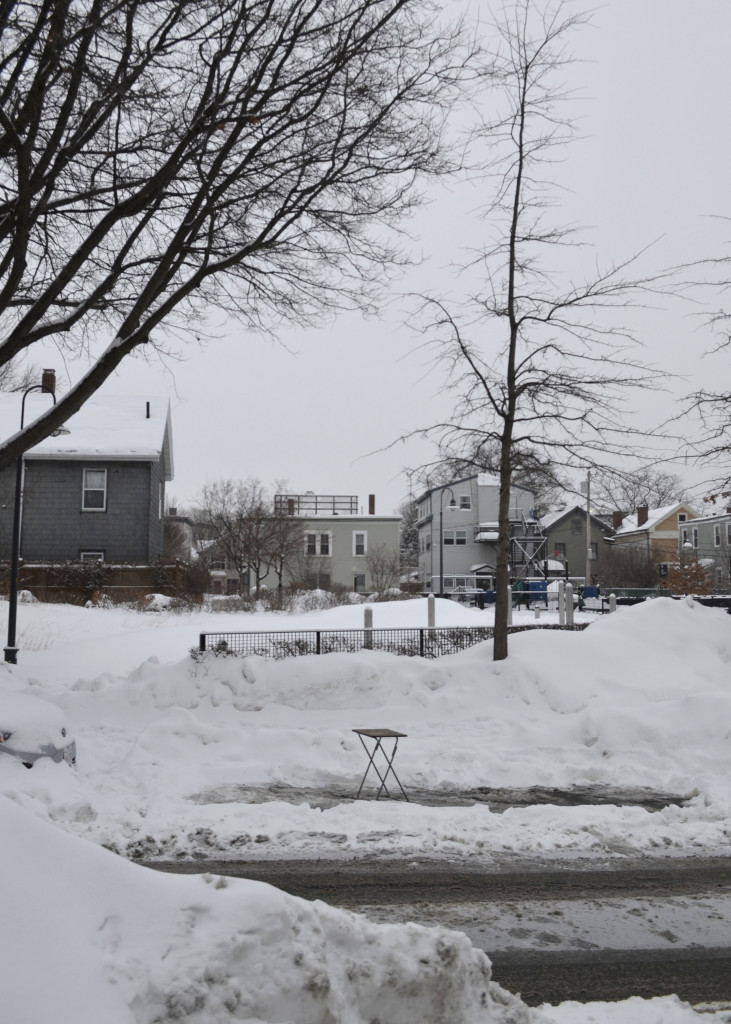
wooden and metal tv tray
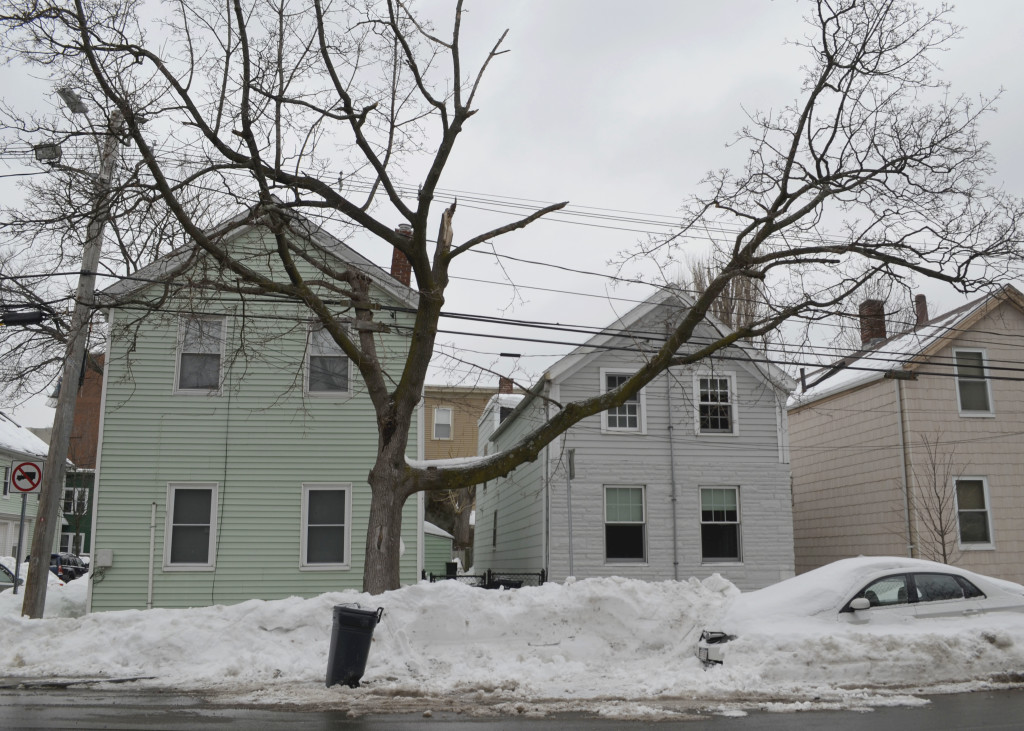
plastic garbage can w/ top
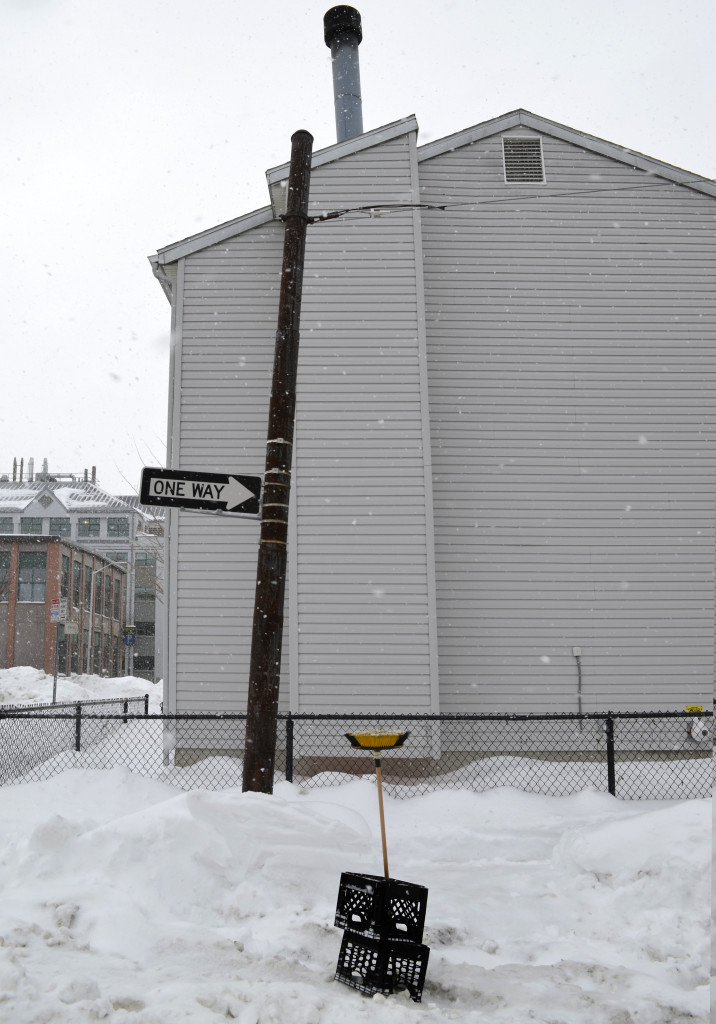
broom & 2 x milk crate
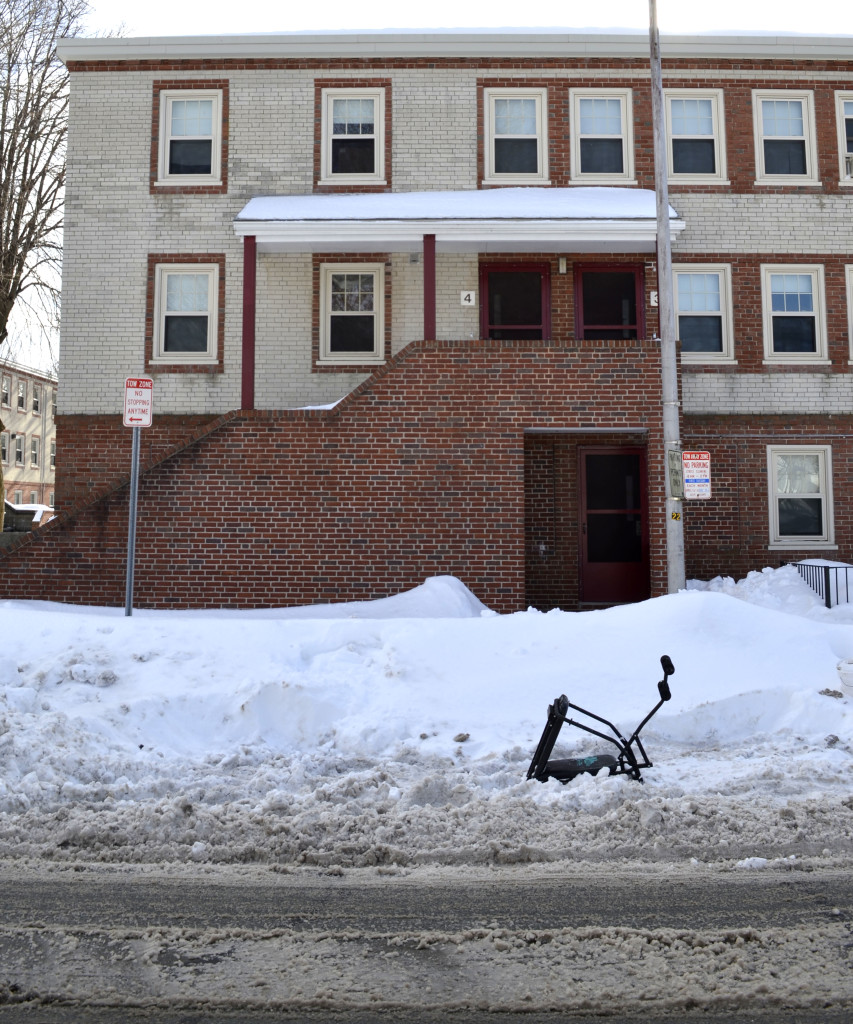
piece from metal exercise machine
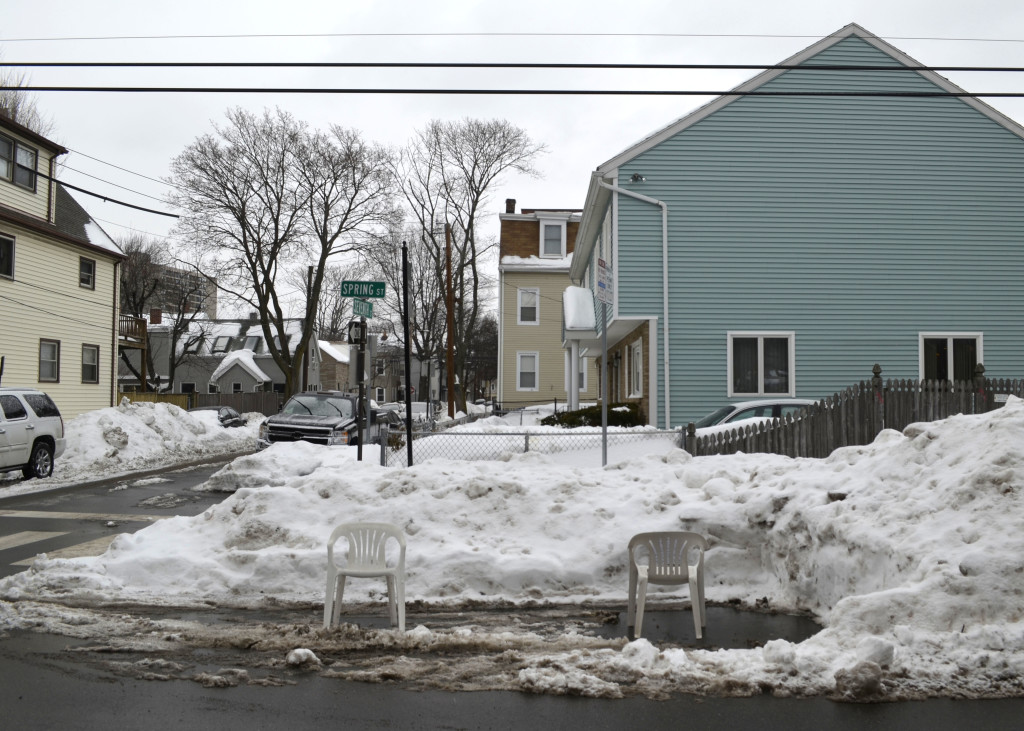
2 x plastic chairs

leaning baby stroller on metal chair
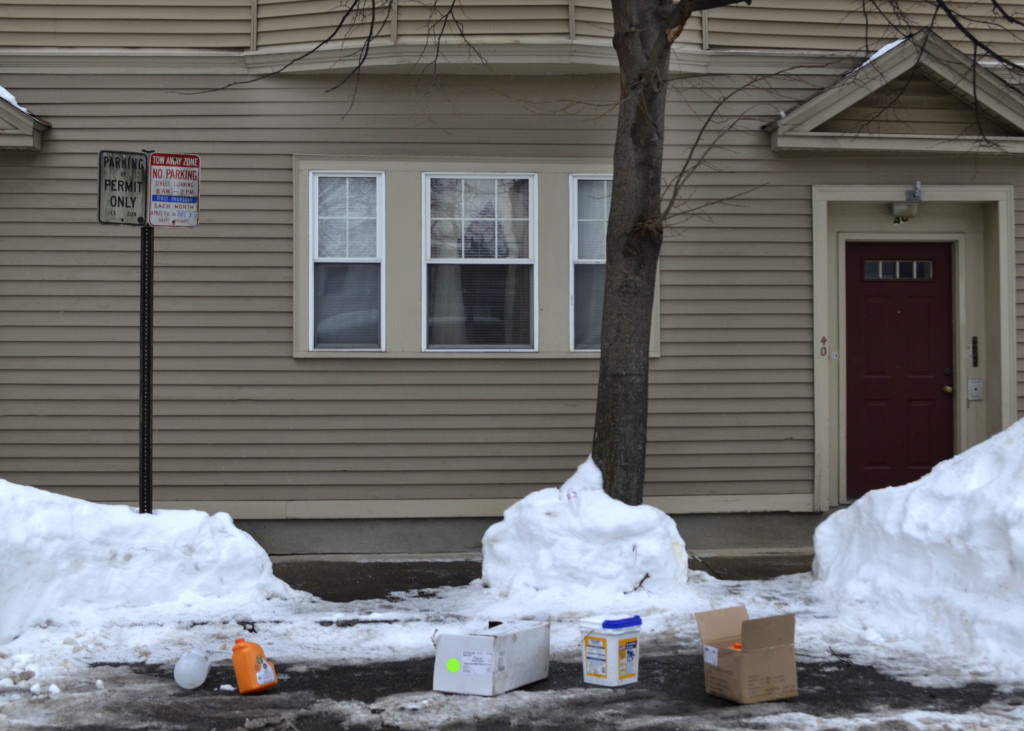
milk cartoon, juice container, kitty litter container & 2 x boxes
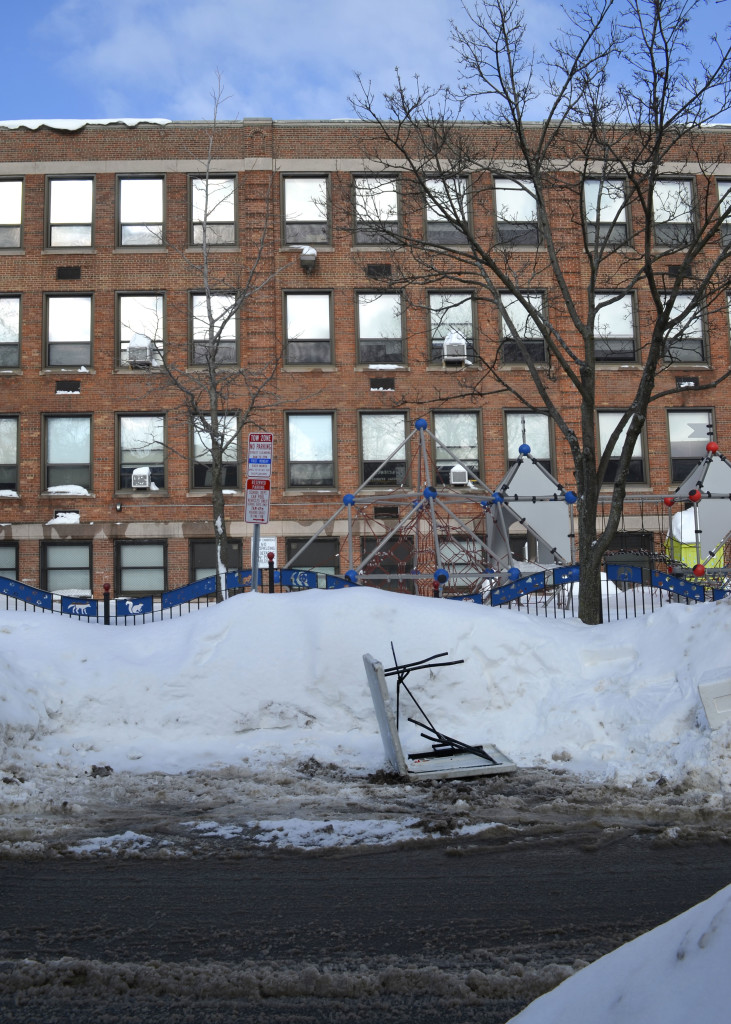
plastic portable table
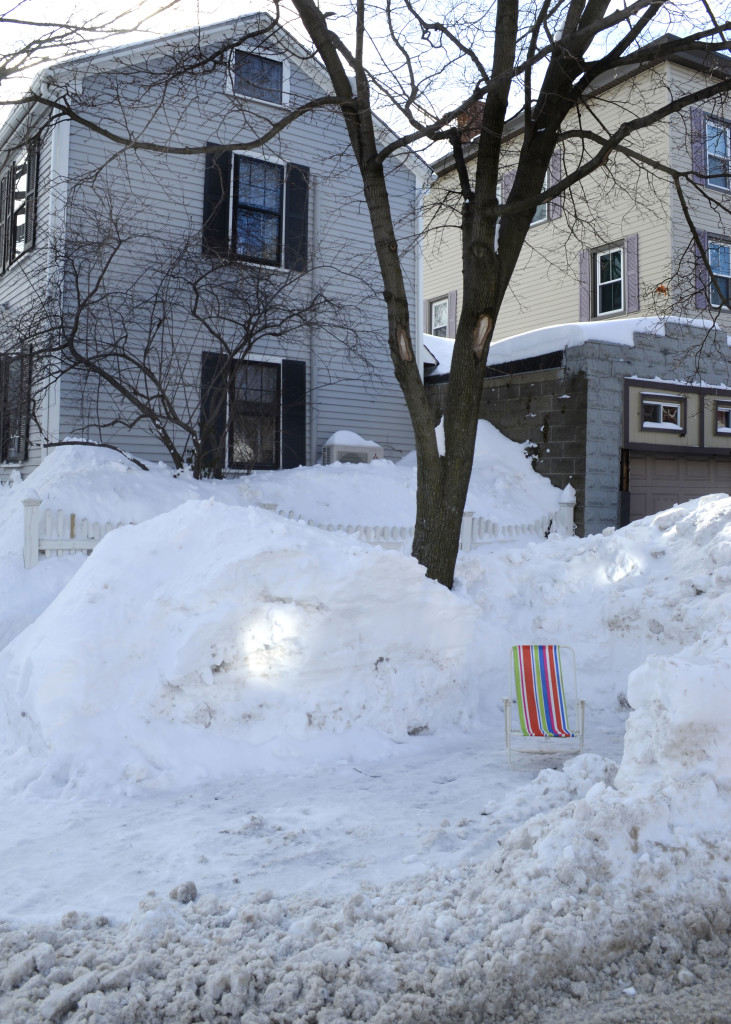
fabric beach chair
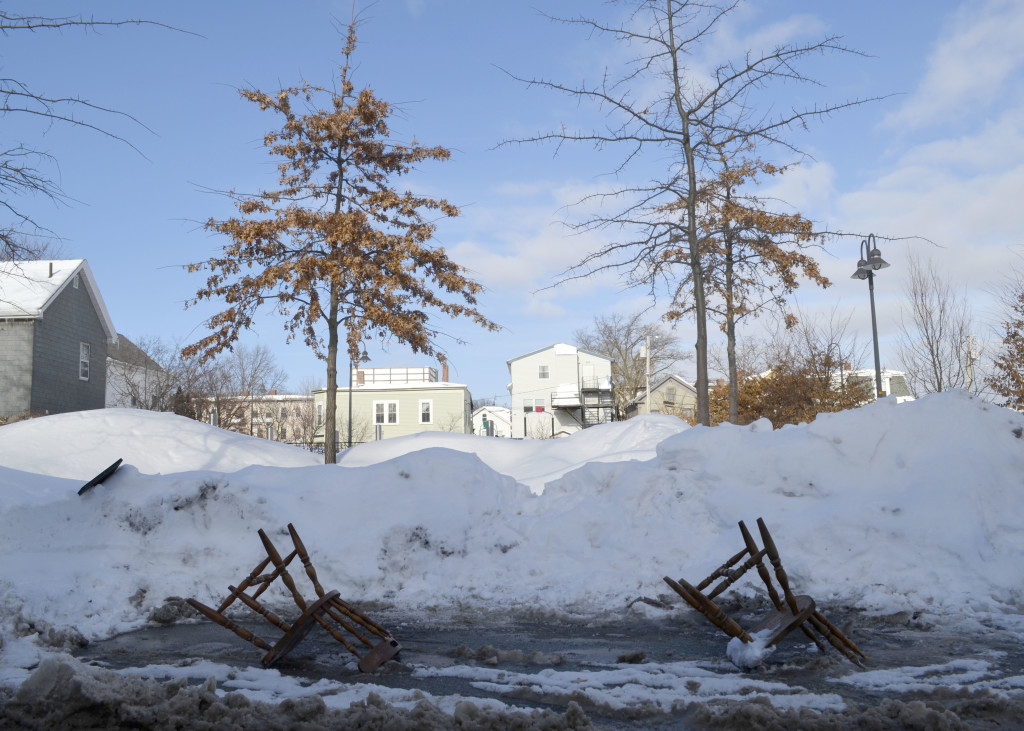
wooden chairs x 2
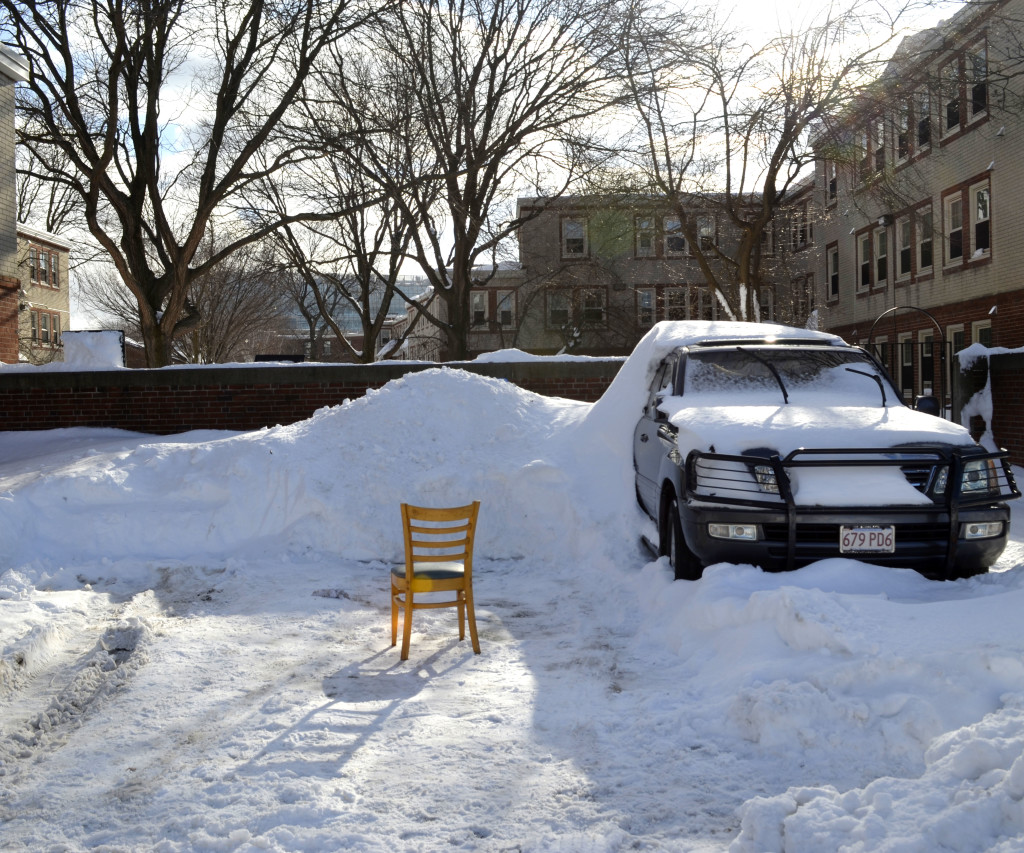
wooden chair w/ fabric seat
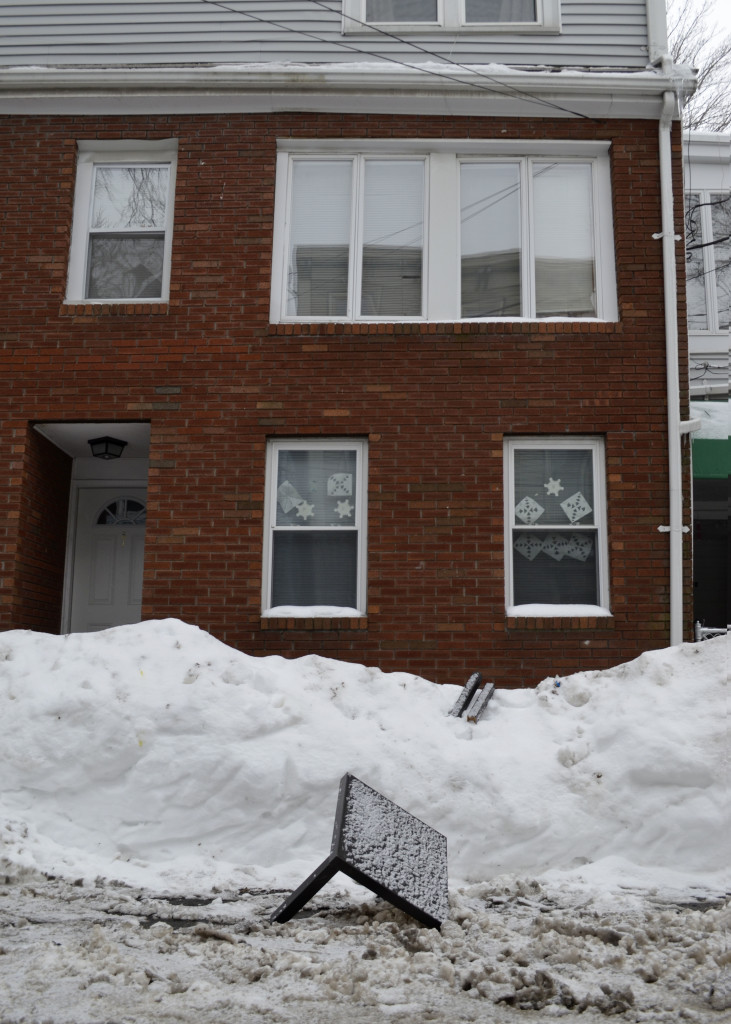
broken, wooden coffee table
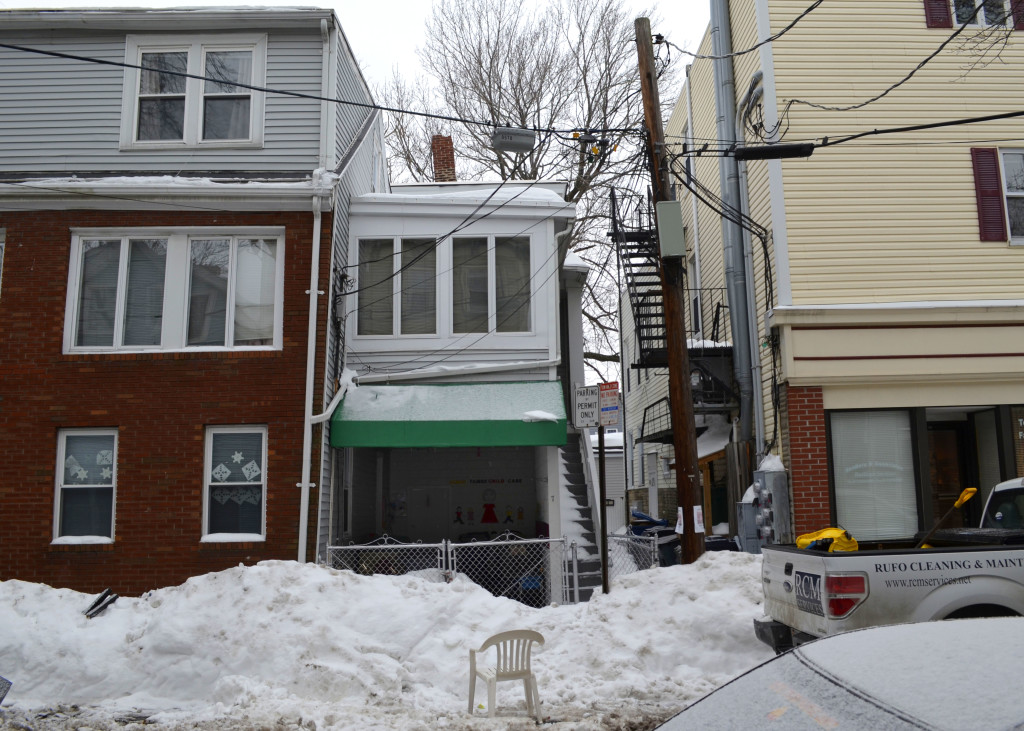
plastic chair
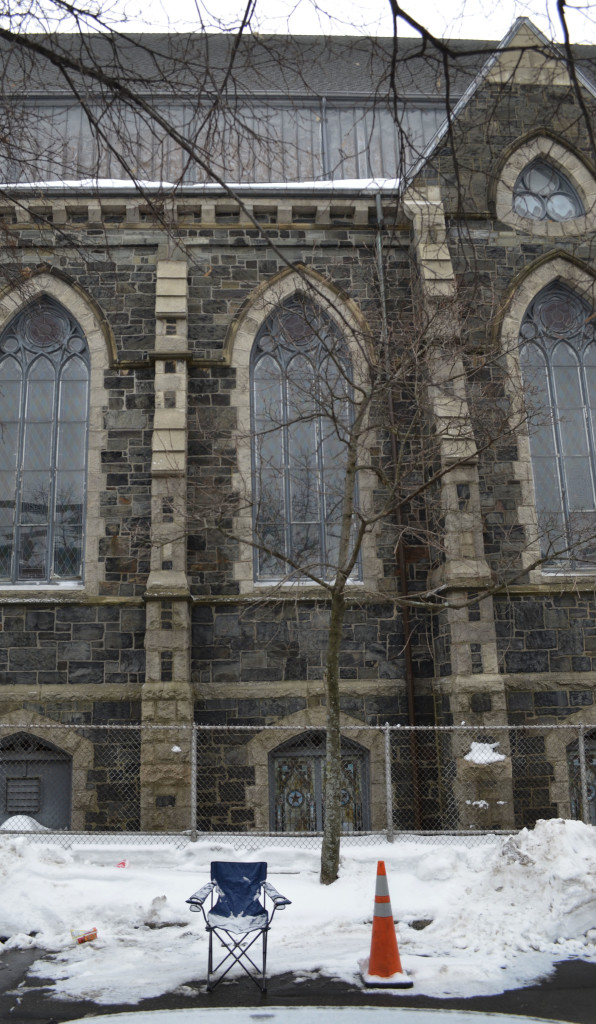
canvas chair & traffic cone
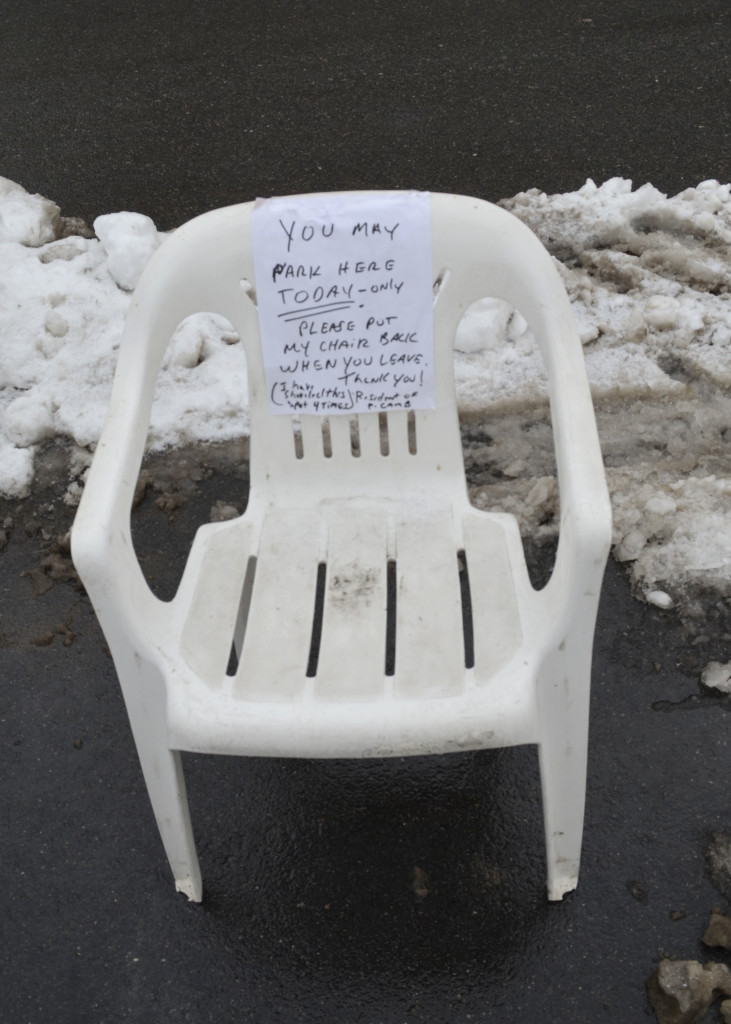
plastic chair w/ taped on note

plastic garbage can w/ top
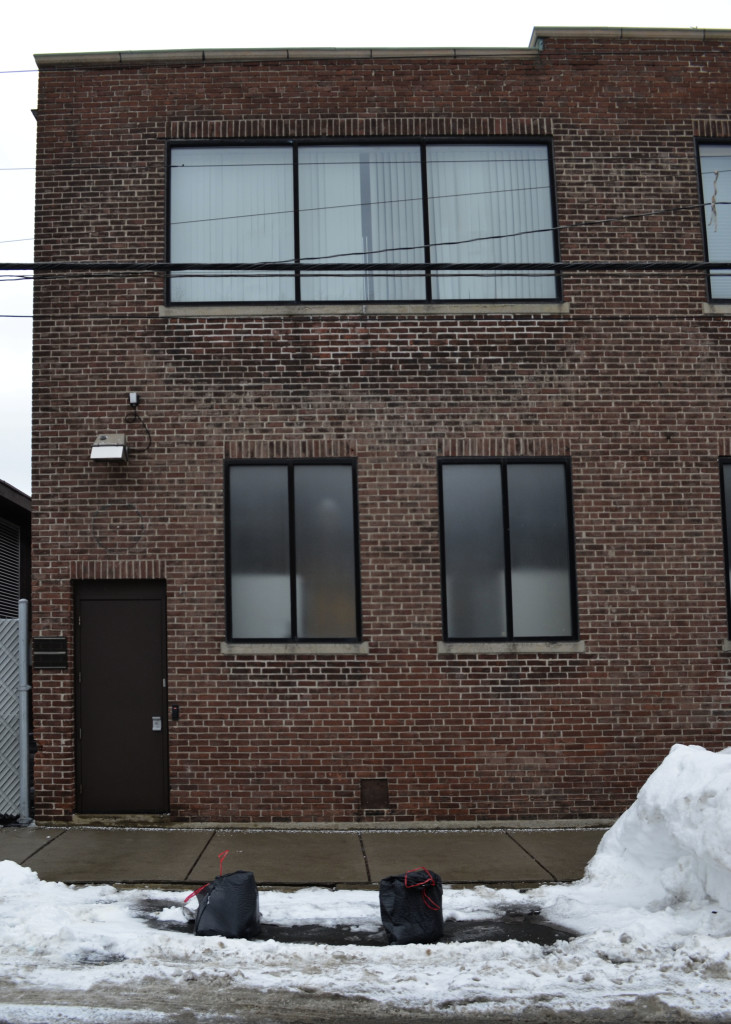
2 x plastic garbage bags
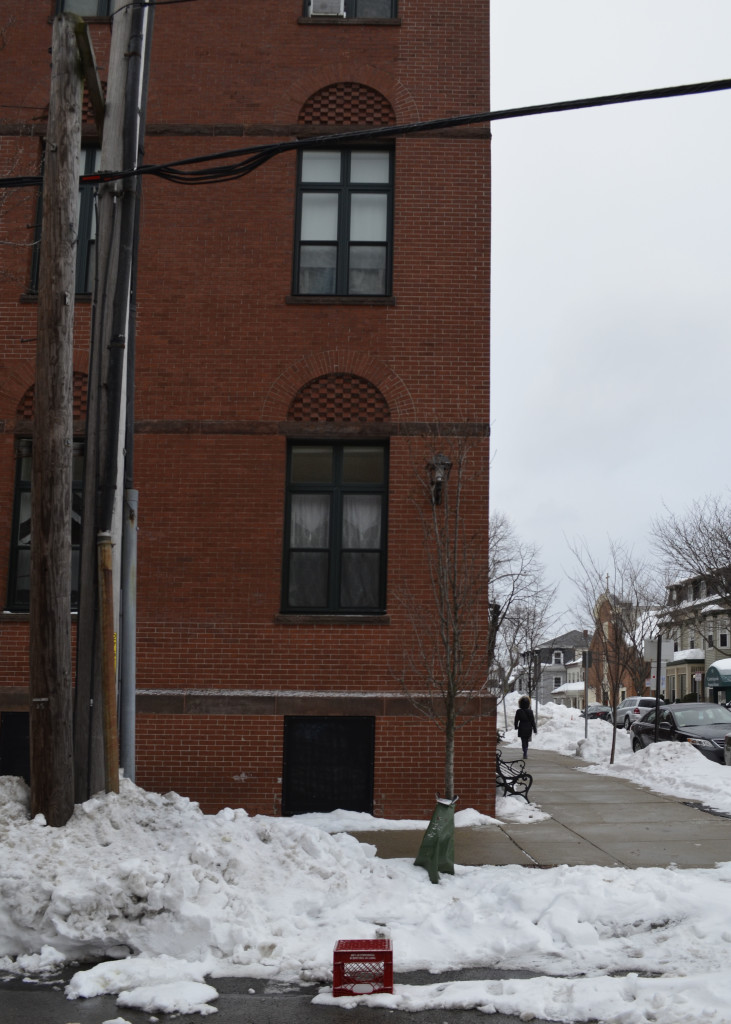
milk crate
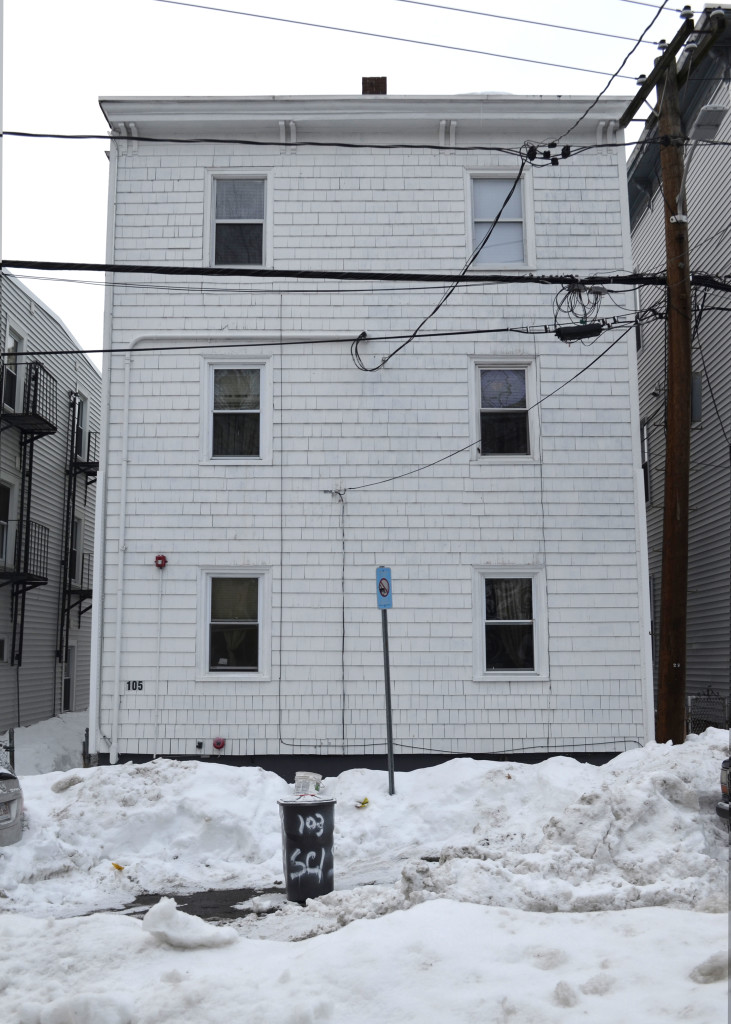
plastic garbage can
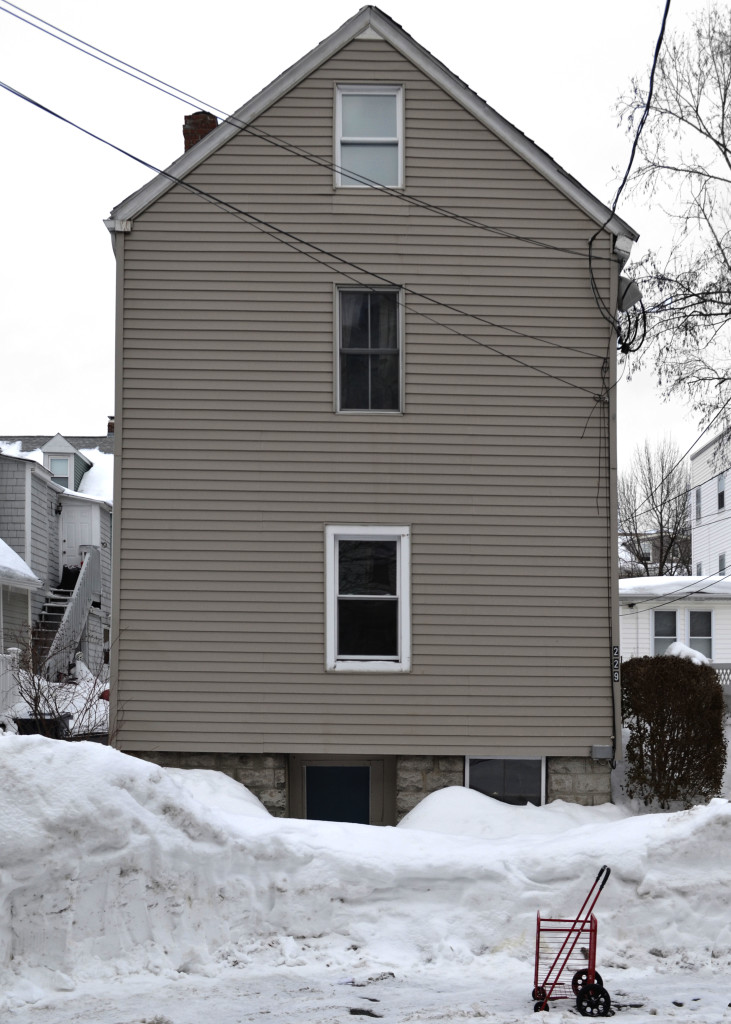
metal push cart

wooden stool w/ paper cup
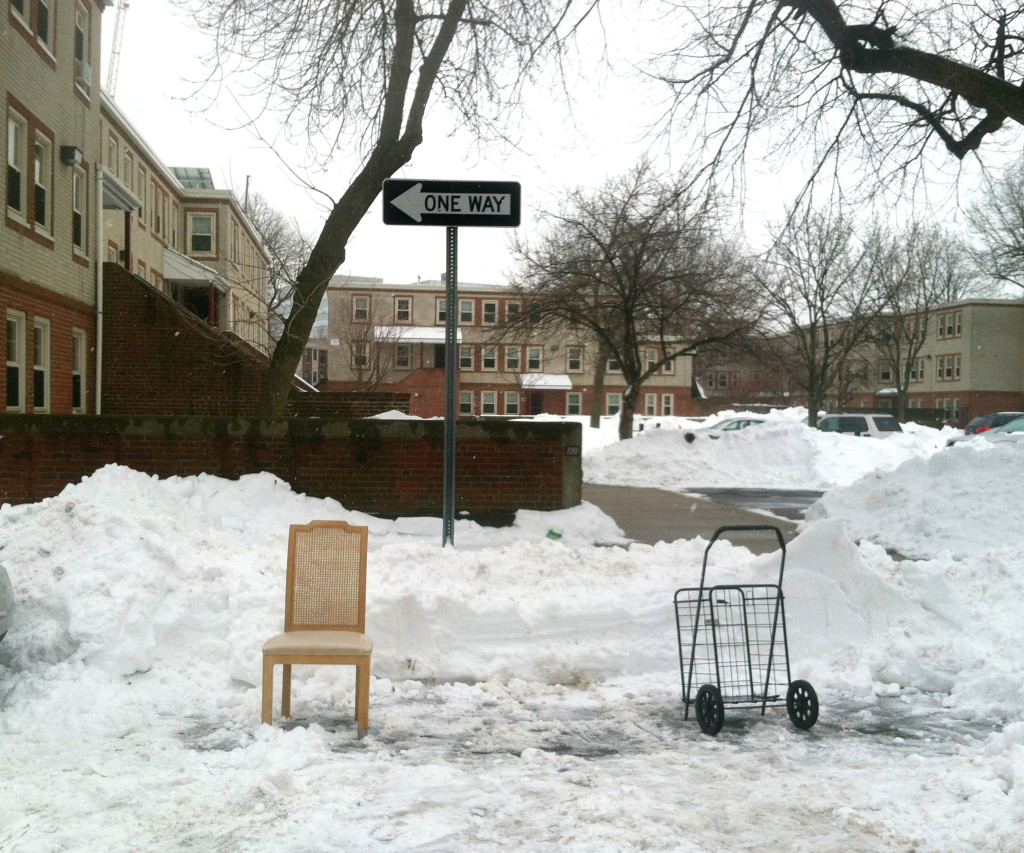
wooden chair & metal push cart
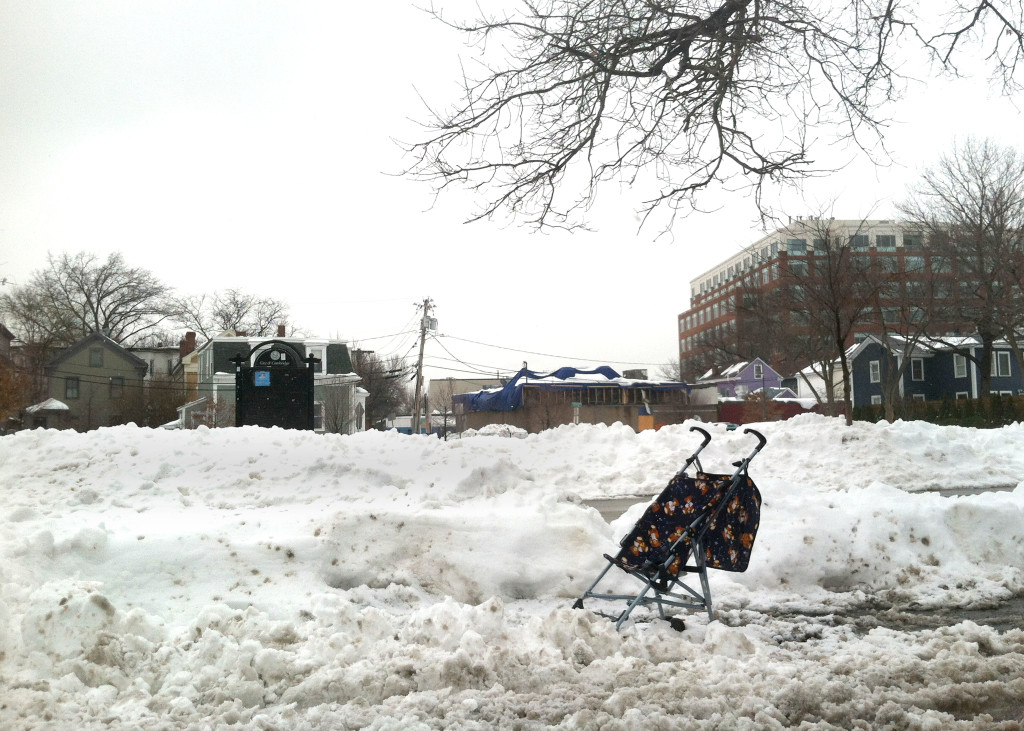
baby stroller
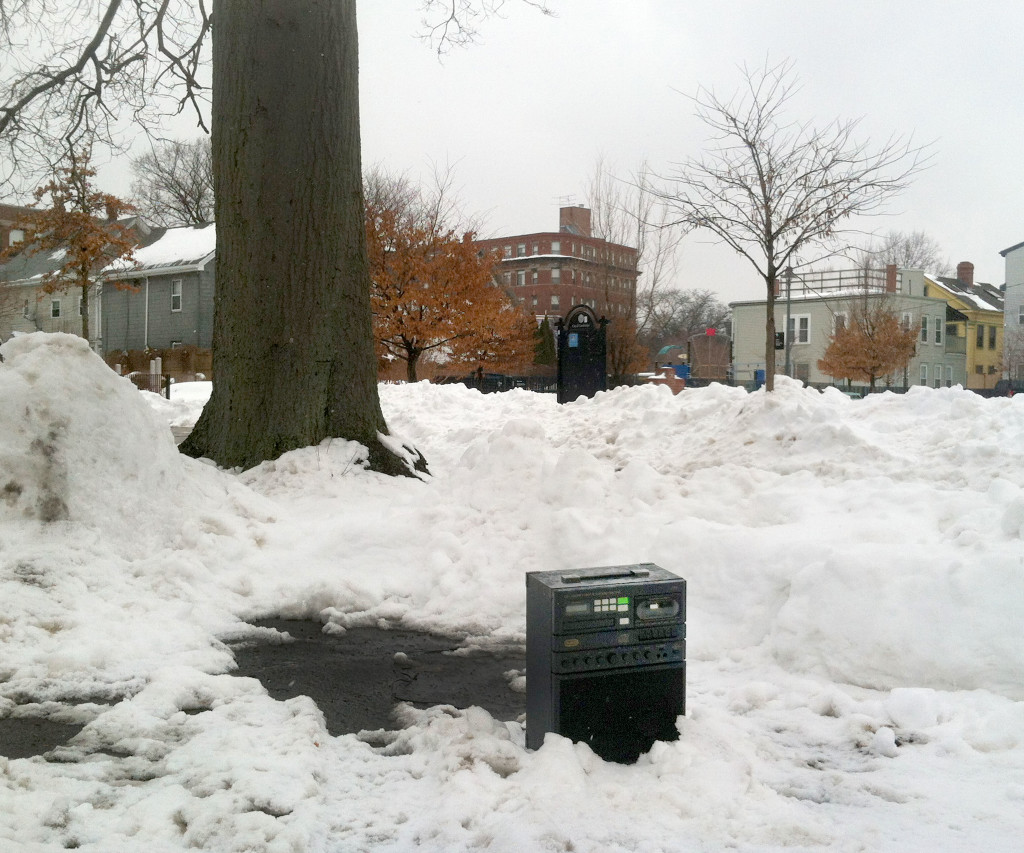
stereo
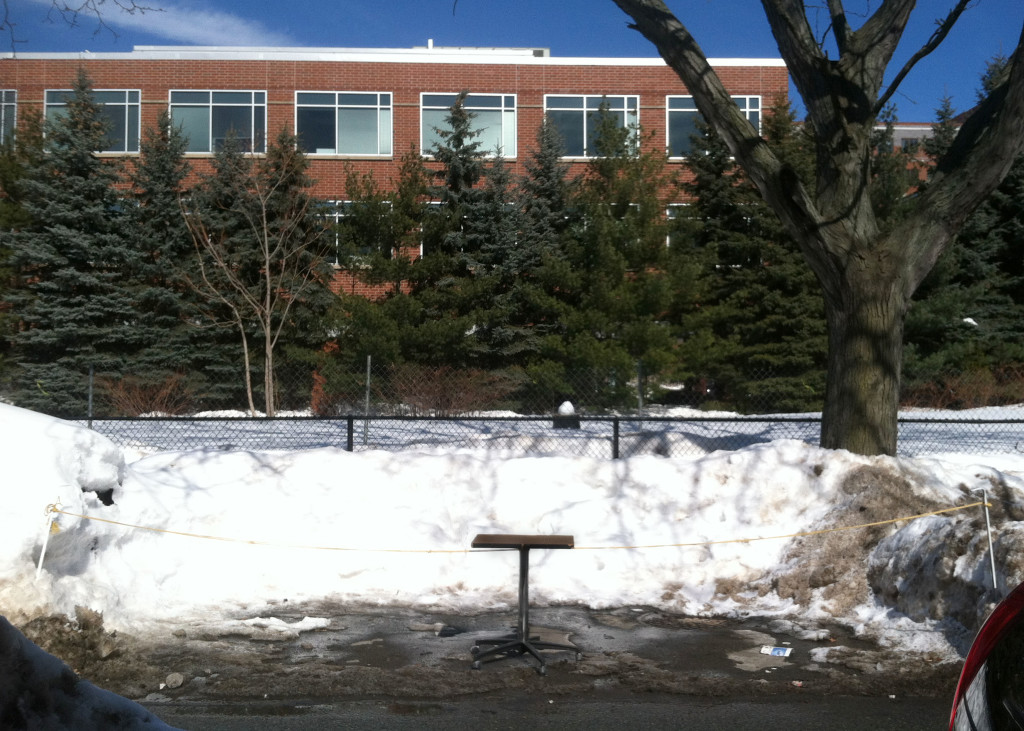
metal and wooden table, metal spikes x 2 & nylon rope

plastic baby toy

plastic chair w/ taped on note
About the Project
In my chronicling of spot savers, I discovered some interesting trends. Spot saving occurs in all neighborhoods regardless of economic status. It will never occur on streets considered heavily trafficked or monitored. More economically depressed areas seemed to be more creative in their spot saving, steering clear of the traditional chair or garbage can and opting for strollers, stereos, exercise equipment and so on.
Two things I found most surprising about the project is how the spot savers reflected the buildings they were in front of and how those spot savers were positioned. In many cases, the spot saver reflected the color, disposition or tone of the buildings they presided in front of. This makes sense as most of the time people reserved parking spots in immediate proximity to their homes. A spot saver’s physical positioning really says a lot about the individual placing them as well. Take two chairs for example: I observed two chairs facing each other, two chairs facing the same direction as well as two chairs facing opposite directions. Even though it’s a subconscious choice, it is a choice nonetheless. And in almost every case, those spot savers were removed and then placed back in the exact same position day after day. The positioning says a lot about the individual.
I’d like to thank my friend Esa Aigamaua for lending me her camera for work on this project.
